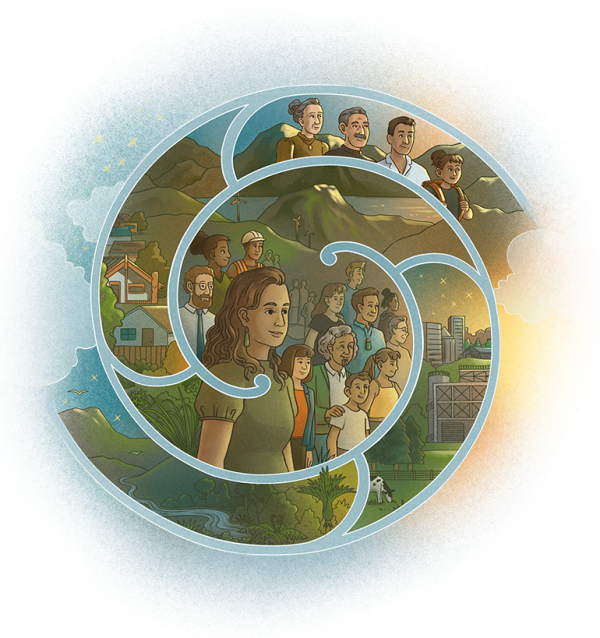A guide to just transitions | He puka arataki whakawhitinga tika
for communities in Aotearoa New Zealand.
mō ngā hapori i Aotearoa.

This is the web version of the guide.
Download the PDF:
A guide to just transitions | He puka arataki whakawhitinga tika [PDF, 36 MB]
Overview | Tirohanga whānui
E tū ki te kei o te waka kia pakia koe e ngā ngaru o te wā.
Stand at the stern of the canoe and feel the spray of the future biting at your face.
Dr Apirana Mahuika
With vision and leadership, disruptive changes can become just transitions
Just transitions are a powerful invitation for communities to develop positive visions for change, transform unfair systems, draw on diverse strengths and worldviews, and come together to solve problems in ways that work better for everyone.
This guide will help you and the people you work with to develop the vision and leadership to address the challenges and disruptions Aotearoa New Zealand faces. They may be global, local, sudden, unprecedented or anticipated. They include rapid technological change, geopolitical instability, climate change and other significant environmental and social shifts.
This guide has 5 chapters to help you work with others to support just transitions.
In this section
Document information
This guide was prepared by the Just Transitions Aotearoa Group, which included diverse researchers and practitioners from across Aotearoa New Zealand who have worked on just transition issues.
Introduction – How to use this guide
This is a guide to help communities in Aotearoa New Zealand navigate transitions through periods of disruption to achieve just outcomes.
Case studies
These case studies show just transition principles and processes in action in Aotearoa New Zealand – even if they might not be named as such by participants.
1. Foundations
Understand why just transitions are challenging and require acknowledging inequity and history to develop shared values and visions for the future. Build your foundations.
2. Connecting
Connect with others to build relationships and collaboration. Start connecting.
3. Planning
Design processes for broad participation in decision-making, and build and communicate a shared vision for just transition pathways. Get into planning.
4. Acting
Convert your shared vision into a plan of actionable steps supported by the resources you will need. Start acting.
5. Adapting
Adjust your plans as you make progress and circumstances change, with an eye towards renewing or ending the journey of transition. Read about adapting.

